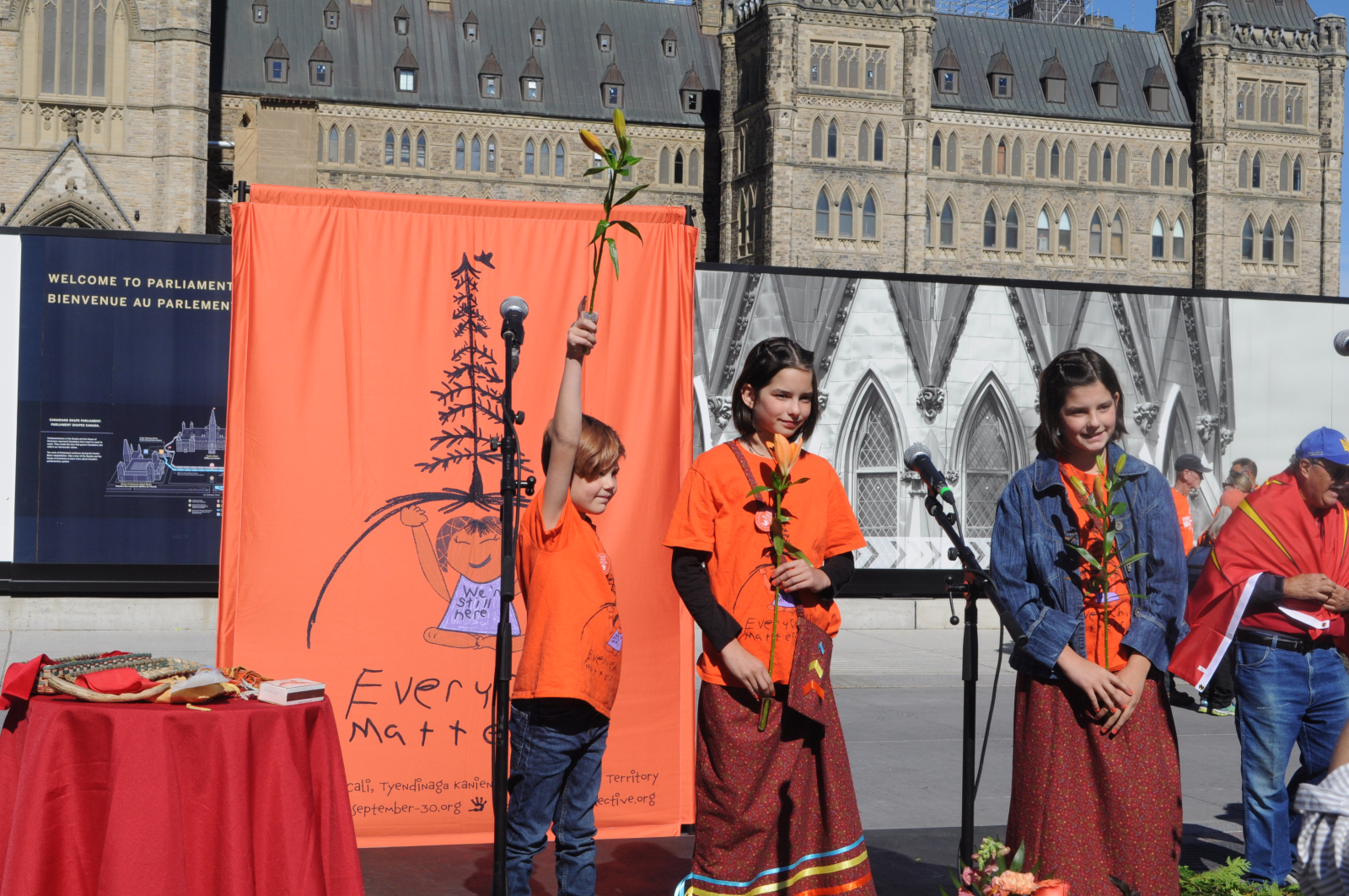Warning: The information and material here may trigger unpleasant feelings or thoughts of past abuse. Contact the 24-hour Residential School Crisis Line at 1-866-925-4419 if you need emotional support.
The second National Truth and Reconciliation Day in Ottawa was marked by drums, chants, smudge, and a wave of orange shirts, ribbon skirts, amautis, among other ancestral garments.
It was a day that focused on survivors and their stories, but also a day that called for reconciliation to move forward.
Murray Sinclair, a former senator who was a commissioner of the Truth and Reconciliation Commission (TRC), noted in a speech that many governments were quick to throw a holiday when the Queen died, but “unfortunately not yet.” they are accepting the meaning of today. ”
To underscore his point, a crane working on the early stages of a condo development turned and operated behind the stage where he spoke.
“Yes, the history of our country is complicated and not always easy to review,” he said. “But you don’t make it better by ignoring or overlooking it.”
“You do better by helping carry out calls to action, learning and unlearning, and resolving to do better.”
what people are reading

A survivor shares her story
Laurie MacDonald, a survivor of Ermineskin Residential School and a member of the Enoch First Nation, said both in her speech and in an interview that her own story is about resilience and recovery. MacDonald also has two spirits, an orientation her grandmother seemed to sense when she was very young.
One day, when he was only five years old and the two of them were picking dandelions, she told him that she saw a gift in him. She said it was up to them to choose a bow and join the hunt with the men, or walk with their sisters and aunts with a basket.
“We need daily reminders — anything that can keep us tuned in and awake to this history and understand how that history relates to today’s realities, that’s helpful,” said TRC Commissioner Marie Wilson. #EveryChildMatters #TRC
“Whatever it is, there’s nothing wrong with it,” he told her. “You choose for yourself, whatever your persuasion, you look at it as a gift.”
All that changed when he attended a residential school run by the Catholic Church. He was physically and sexually abused in residential schools, abuse he says went deeper because he has two spirits.
“They think this is what you want,” she said, speaking to her abusers at residential schools. “Who wants to be abused? Because you’re a man do you think I’m attracted to you? We are also demanding, you know?

“For me to heal, I have to see it as a gift,” MacDonald said. “I see that trauma, and I see it as a gift because I can still take parts of it and it makes me a stronger person in the future.”
MacDonald could have stressed trauma in his speech, but said he prefers to focus on resilience, healing, and what the Creator has given them, including a beautiful sunny day.
That defiant resilience in the face of ongoing colonialism is what MacDonald sees as characteristic of indigenous peoples.
“Most indigenous people, we’ve been given a lot of shit in our lifetimes, and they can throw a lot more out there, but at the end of the day, we’ll dust it off like water from a duck,” he said. .
MacDonald’s resilience continues to this day. He lost his life partner shortly after they retired, and last year he was hit by a car, causing mobility problems. Still, he continues to laugh and celebrate his gifts as a person of two spirits. He also speaks, works and advocates, as he has done all his life as a school teacher and social worker.
Commemorating Dr. Peter Henderson Bryce
Also on Friday, a new plaque commemorating Dr Peter Henderson Bryce was announced on Sparks Street near the Parliament Buildings. Bryce wrote a damning report on the residential school, noting rampant malnutrition, neglect, and high rates of illness.
The report expanded into a work titled “The story of A national crime: to be a call to justice for the Indians of Canada.” published in 1922.
The work culminated after Duncan Campbell Scott, known as the architect of the institutions, buried Bryce’s work and ignored the recommendations, citing too high a cost to implement.

For Marie Wilson, one of the commissioners of the TRC, Bryce is an inspiring man, but no more inspiring than “all these survivors”.
He is the example that non-Indigenous Canadians must follow in responding to reconciliation and speaking out against the horrors of residential schools and the ongoing history of colonialism.
For Cindy Blackstock, a Gitxsan child welfare activist and executive director of the First Nations Child and Family Caring Society of Canada, Bryce is an “example of all resistance.” Her own story is similar to his: Blackstock fought for years to get justice for indigenous children in the child welfare system.
She says the shock of Bryce’s work should serve as an ominous warning about the news cycle and how easy it is to forget.
When his report was made public, newspapers were full of headlines about the atrocities, he said in an interview. “But when the incumbents died, so did the kids.”
For Wilson, daily reminders are essential to the Truth and Reconciliation process. It’s the only way to keep people from forgetting, he said.
“When we finished our formal work, an entire volume was dedicated to children missing in unmarked graves and that was in 2015,” he said. “And last year, six years later, the entire country seemed totally shocked and shocked that there were missing children in unmarked graves.
“Obviously, we need daily reminders available: anything that can keep us tuned in and awake to this story and understand how that story relates to the realities of today and to the future as a country, starting today, that’s helpful.”
